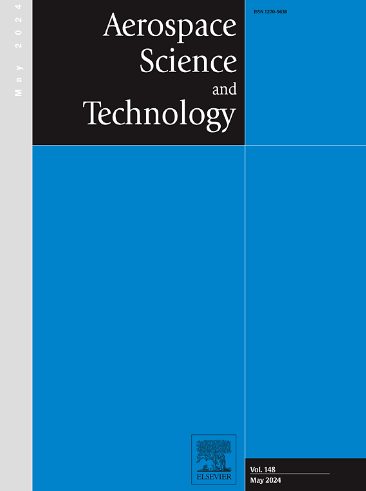Robust adaptive control law design for enhanced stability of agriculture UAV used for pesticide spraying
IF 5
1区 工程技术
Q1 ENGINEERING, AEROSPACE
引用次数: 0
Abstract
In precision agriculture, such as crop spraying, controlling UAVs presents various challenges such as variable payload, inertial coefficient variation, influence of external disturbances such as wind gusts, and uncertainties associated with the dynamics. To address these challenges, this paper proposes a hybrid control technique that combines higher-order integral sliding mode control, fast-terminal sliding mode control, and adaptive law. The objective is to mitigate the effects of variable payload, external disturbances, and uncertainties while maintaining the stability and performance of the UAV during spraying. Initially, a mathematical model is constructed for a coaxial octocopter UAV that is fitted with a spraying tank. This model takes into account the variation in mass and moment of inertia. Then, a two-loop control structure is employed to attain control of both the translational and rotational axis of the UAV. The numerical simulations are performed on a nonlinear model of the agricultural UAV system and compared with neural network based sliding mode control and robust adaptive backstepping control schemes. The robustness of the proposed scheme is tested in wind gusts and sensor measurement error conditions. Finally, hardware-in-loop simulations are performed using the Pixhawk Orange Cube flight controller to validate the real-time capability of the proposed scheme.
设计鲁棒自适应控制法则,增强用于喷洒农药的农业无人机的稳定性
在农作物喷洒等精准农业领域,无人机控制面临着各种挑战,如可变有效载荷、惯性系数变化、阵风等外部干扰的影响以及与动态相关的不确定性。为了应对这些挑战,本文提出了一种混合控制技术,该技术结合了高阶积分滑模控制、快速终端滑模控制和自适应法则。其目的是减轻可变有效载荷、外部干扰和不确定性的影响,同时保持无人机在喷洒过程中的稳定性和性能。首先,为一架安装了喷洒罐的同轴八旋翼无人机构建了一个数学模型。该模型考虑了质量和惯性矩的变化。然后,采用双环控制结构来实现对无人机平移轴和旋转轴的控制。对农业无人机系统的非线性模型进行了数值模拟,并与基于神经网络的滑模控制和鲁棒自适应反步进控制方案进行了比较。在阵风和传感器测量误差条件下测试了所提方案的鲁棒性。最后,使用 Pixhawk Orange Cube 飞行控制器进行了硬件在环仿真,以验证所提方案的实时性。
本文章由计算机程序翻译,如有差异,请以英文原文为准。
求助全文
约1分钟内获得全文
求助全文
来源期刊

Aerospace Science and Technology
工程技术-工程:宇航
CiteScore
10.30
自引率
28.60%
发文量
654
审稿时长
54 days
期刊介绍:
Aerospace Science and Technology publishes articles of outstanding scientific quality. Each article is reviewed by two referees. The journal welcomes papers from a wide range of countries. This journal publishes original papers, review articles and short communications related to all fields of aerospace research, fundamental and applied, potential applications of which are clearly related to:
• The design and the manufacture of aircraft, helicopters, missiles, launchers and satellites
• The control of their environment
• The study of various systems they are involved in, as supports or as targets.
Authors are invited to submit papers on new advances in the following topics to aerospace applications:
• Fluid dynamics
• Energetics and propulsion
• Materials and structures
• Flight mechanics
• Navigation, guidance and control
• Acoustics
• Optics
• Electromagnetism and radar
• Signal and image processing
• Information processing
• Data fusion
• Decision aid
• Human behaviour
• Robotics and intelligent systems
• Complex system engineering.
Etc.
 求助内容:
求助内容: 应助结果提醒方式:
应助结果提醒方式:


